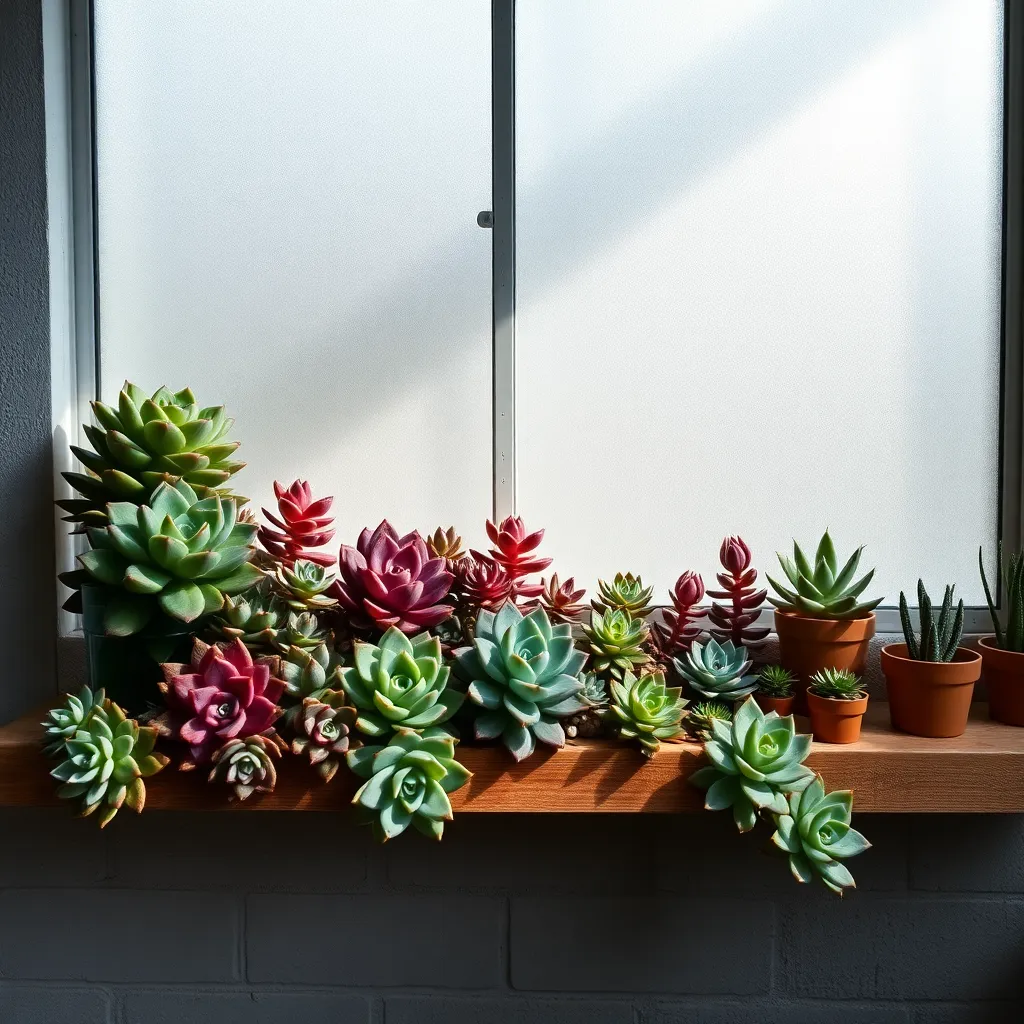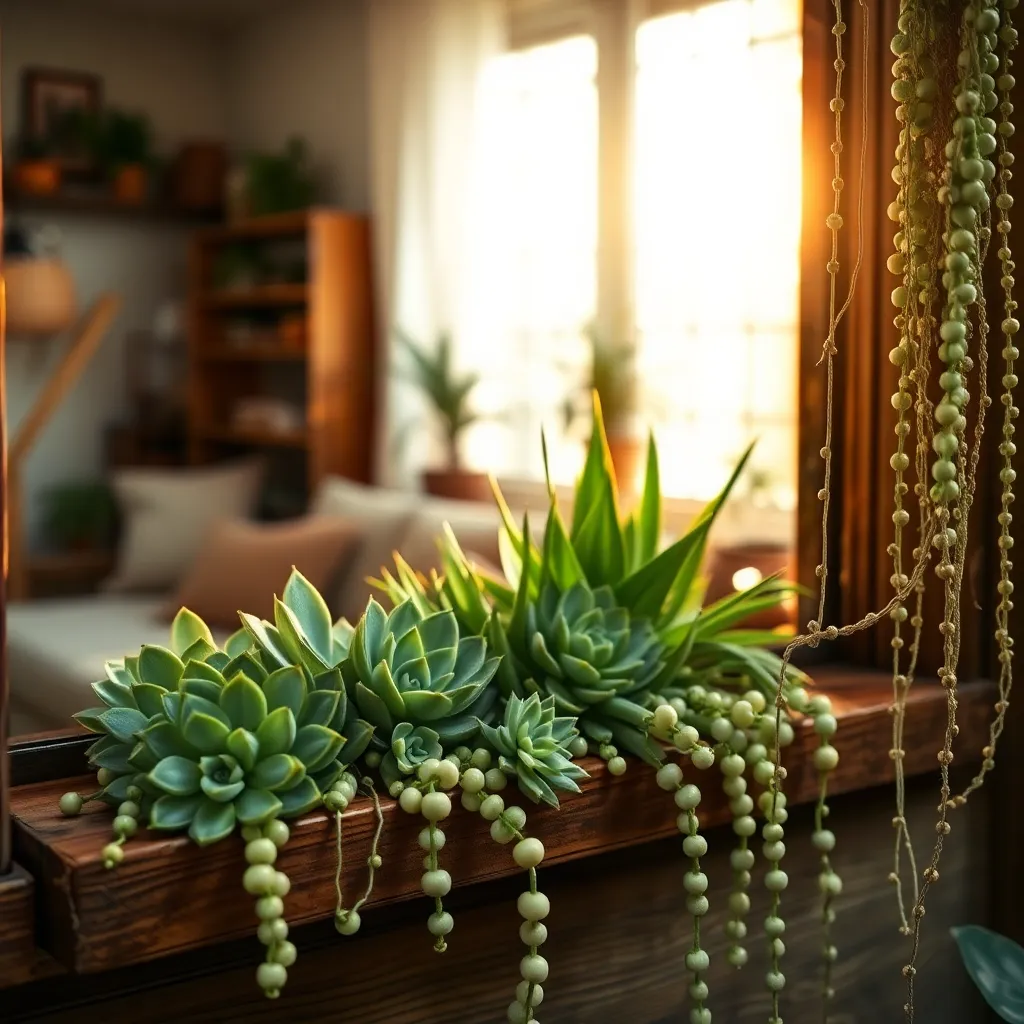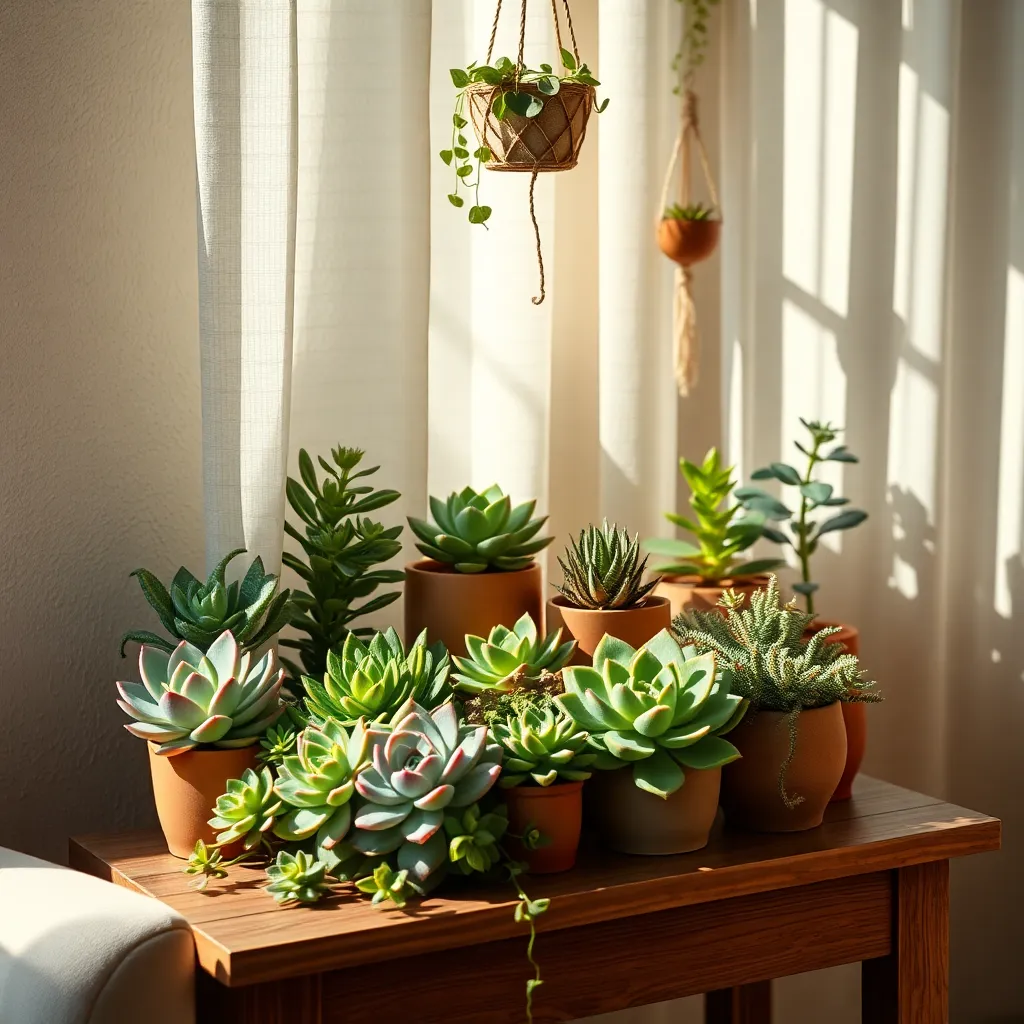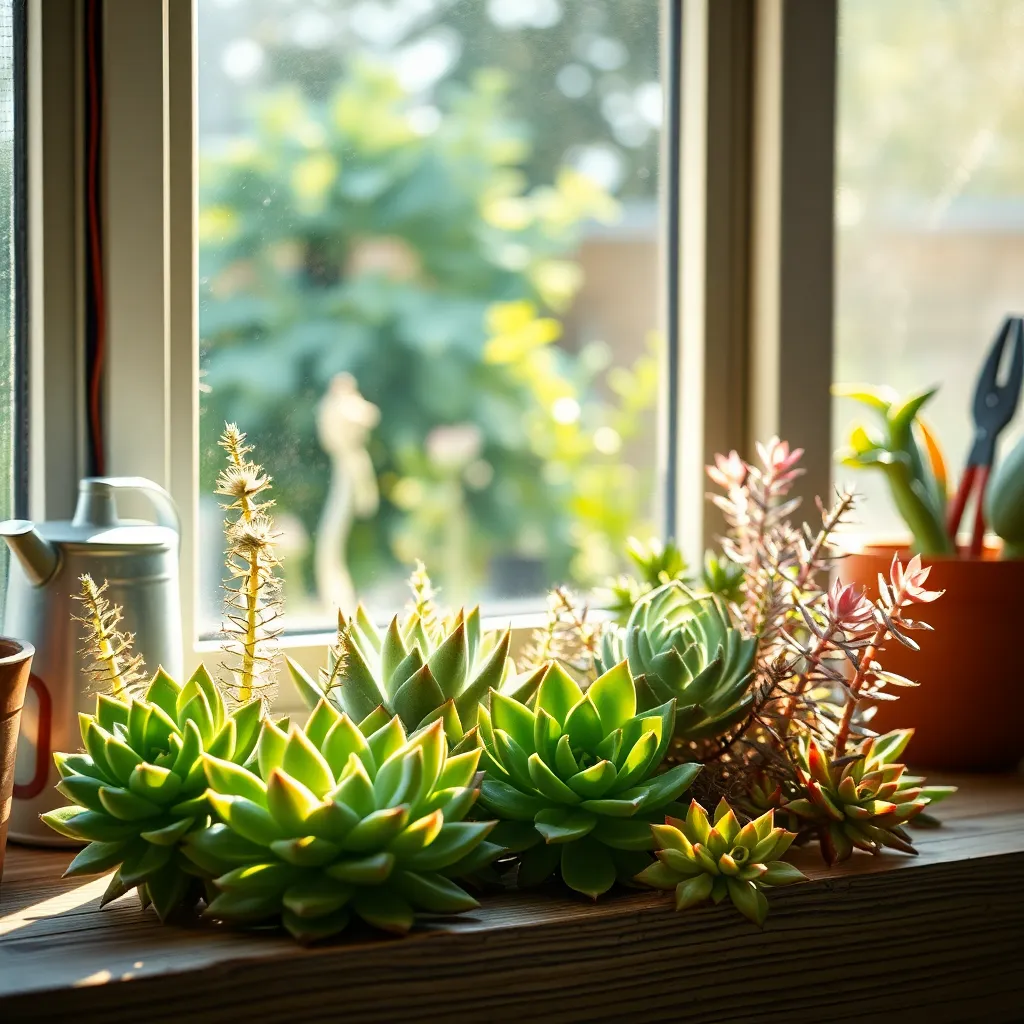In the world of gardening, succulents hold a special place, admired for their resilience and unique beauty. Yet, many gardeners are often surprised to learn that certain succulents can flourish even in the dimmer corners of our homes. Whether you’re a seasoned green thumb or just beginning your gardening journey, the idea of having lush, thriving plants without a sun-drenched window might seem too good to be true. However, with the right selection of succulents, you can cultivate a vibrant indoor garden that thrives even in low-light conditions.
Understanding how succulents adapt to different environments is key to choosing the right plants for your space. This article will guide you through a curated list of succulents that defy the odds and prosper in less-than-ideal lighting. From the beginner-friendly Snake Plant to the captivating Haworthia, each of these succulents brings something unique to your indoor garden. You’ll discover practical tips and insights into creating a nurturing environment for your new leafy companions, ensuring they grow healthily and beautifully.
As we delve into this fascinating aspect of succulent care, you’ll gain confidence in selecting and maintaining these adaptable plants. Embrace the opportunity to transform shadowy spaces into verdant displays, learning how to balance light, water, and care to keep your succulents happy. This journey is not only about creating a more inviting home but also about enriching your gardening skills and enjoying the rewarding process of watching your plants thrive. Let’s explore how you can bring the verdant beauty of succulents into even the coziest corners of your home.
Understanding Low Light Conditions

Understanding low light conditions is crucial for selecting the right succulents for your indoor spaces. Low light does not mean no light; it refers to areas that receive indirect sunlight or are shaded for most of the day.
In such environments, succulents like the Haworthia and Gasteria adapt well due to their ability to thrive with minimal sunlight. It’s essential to place these plants near a north-facing window or a few feet away from a south-facing one to ensure they get enough indirect light.
For beginners, it’s important to water succulents in low light sparingly, as their soil takes longer to dry out. A general rule is to water them only when the top inch of soil feels completely dry, which might be every two to four weeks depending on humidity levels.
Advanced gardeners can experiment with using artificial grow lights to supplement natural light, especially in rooms with extremely low light. LED grow lights are energy-efficient and can be set on timers to mimic natural daylight cycles, promoting healthier growth.
Top Succulents for Dim Spaces

When it comes to low-light environments, certain succulents are surprisingly adaptable. One excellent choice is the Zebra Haworthia, known for its striking striped leaves and ability to thrive in dim conditions.
Place your Zebra Haworthia in well-draining soil, such as a cactus mix, to prevent root rot. This succulent requires watering only when the soil is completely dry, typically every two to three weeks.
Another ideal option is the Snake Plant, also known as Sansevieria, which can tolerate low light and neglect. Its upright, sword-like leaves not only purify the air but also require minimal maintenance.
For Snake Plants, ensure the soil is a fast-draining potting mix and water sparingly. They can survive with watering once a month, making them perfect for busy gardeners or those new to plant care.
The Panda Plant is another succulent that can flourish in shaded areas. Its fuzzy, silver-green leaves with brown edges add texture and interest to any indoor garden space.
Use a gritty soil mix for Panda Plants and water them moderately, allowing the soil to dry out between waterings. Placing them in a spot with indirect light will help maintain their color and health.
To ensure success with low-light succulents, consider rotating them occasionally to promote even growth. This simple step can prevent the plants from leaning towards the light source and helps maintain their shape.
Additionally, gently dust the leaves with a soft brush or cloth to allow for optimal photosynthesis. By following these tips, your dimly lit spaces can become thriving green sanctuaries.
Essential Care Tips for Low Light

Creating the right environment for low-light succulents starts with choosing the appropriate soil. Opt for a well-draining cactus mix, which will prevent root rot and mimic their natural habitat. To enhance drainage, consider adding pumice or perlite to the mix, especially if your succulent is in a pot without a drainage hole.
Watering is crucial, but it needs to be done sparingly to suit low-light conditions. Allow the soil to dry out completely before watering again, which might mean watering only once every two weeks. This approach helps prevent overwatering, a common mistake that can lead to fungal issues.
Although these succulents thrive in dim spaces, they still benefit from some indirect light. Place them near a north-facing window or use a grow light to supplement natural light if needed. Rotate the plants occasionally to ensure even growth, as they may lean toward the light source.
Temperature and humidity are also important factors to consider. These plants prefer temperatures between 60°F and 75°F and can suffer if exposed to cold drafts. Maintain a moderate humidity level by avoiding rooms with excessive moisture or dryness, such as bathrooms or near heating vents.
Creative Indoor Placement Ideas

Exploring creative indoor placement ideas can significantly enhance the aesthetics of your home while ensuring your succulents receive the care they need. Consider placing succulents like the Zebra Plant (Haworthia) on a bookshelf or a desk where indirect light is available, as they thrive in low-light conditions and add a touch of greenery to your workspace.
You can also use hanging planters to maximize space and allow succulents like the String of Pearls (Senecio rowleyanus) to cascade beautifully down. These plants benefit from being displayed near a north-facing window where they can receive filtered light without the risk of sunburn.
For a minimalist and modern look, place succulents in geometric planters on your bathroom windowsill. This not only decorates the space but also provides the plants with the humidity they enjoy, especially for varieties like Panda Plant (Kalanchoe tomentosa), as long as they aren’t directly in the path of the shower’s spray.
Finally, consider creating a succulent terrarium with varieties such as Jade Plant (Crassula ovata) and place it as a centerpiece on your dining table. Ensure the terrarium is situated where it can receive low, indirect light, and remember to water sparingly, allowing the soil to dry out completely between waterings to prevent rot.
Troubleshooting Common Growth Issues

Succulents are known for their resilience, but even they can encounter growth issues, especially in low light conditions. One common problem is leggy growth, where the plant stretches out in search of more light. To address this, ensure you rotate your succulents every few weeks to promote even growth. Additionally, consider moving them closer to a light source, like a north-facing window, if possible.
Overwatering is another frequent issue that can lead to root rot, particularly in low-light environments where the soil stays moist longer. To prevent this, use a well-draining soil mix, such as one that contains sand or perlite, and ensure pots have drainage holes. Watering should be infrequent; allow the soil to dry out completely between waterings, which might mean watering only once every two to three weeks.
Pests like mealybugs and aphids can still affect succulents kept indoors, even in low light. Regularly check the leaves and stems for signs of infestation, such as white, cottony spots or sticky residue. If pests are present, wipe the leaves with a cotton swab dipped in rubbing alcohol or use an insecticidal soap, ensuring you cover all parts of the plant thoroughly.
For those experiencing slow growth, remember that succulents naturally grow more slowly in low light. However, ensuring proper nutrition can help; consider using a diluted liquid fertilizer specifically formulated for succulents once every few months. Avoid over-fertilizing, as this can cause more harm than good, leading to burnt roots and leaf drop.
Conclusion: Growing Success with These Plants
In navigating the intricate landscape of relationships, understanding and nurturing them can be akin to caring for succulents in low light. First, we explored the importance of adaptability, highlighting how relationships thrive when partners adjust to each other’s needs. Next, we delved into resilience, emphasizing the strength found in weathering challenges together. Communication was another cornerstone, where clarity and openness foster deeper connections. We also touched on the significance of space and independence, reminding us that personal growth can blossom within a committed partnership. Lastly, we celebrated patience, acknowledging that love flourishes with time and care.
As your immediate next step, take a moment to reflect on how these concepts apply to your own relationships. Perhaps initiate a heartfelt conversation with a loved one today, focusing on openness and adaptability.
To ensure these insights are always at your fingertips, save or bookmark this article now. Let it serve as a guiding light as you cultivate meaningful connections.
Remember, by implementing these principles, you’re not just nurturing your current relationships but also laying the groundwork for lasting, fulfilling partnerships. Your journey toward relationship success is not only possible but well within your reach.
